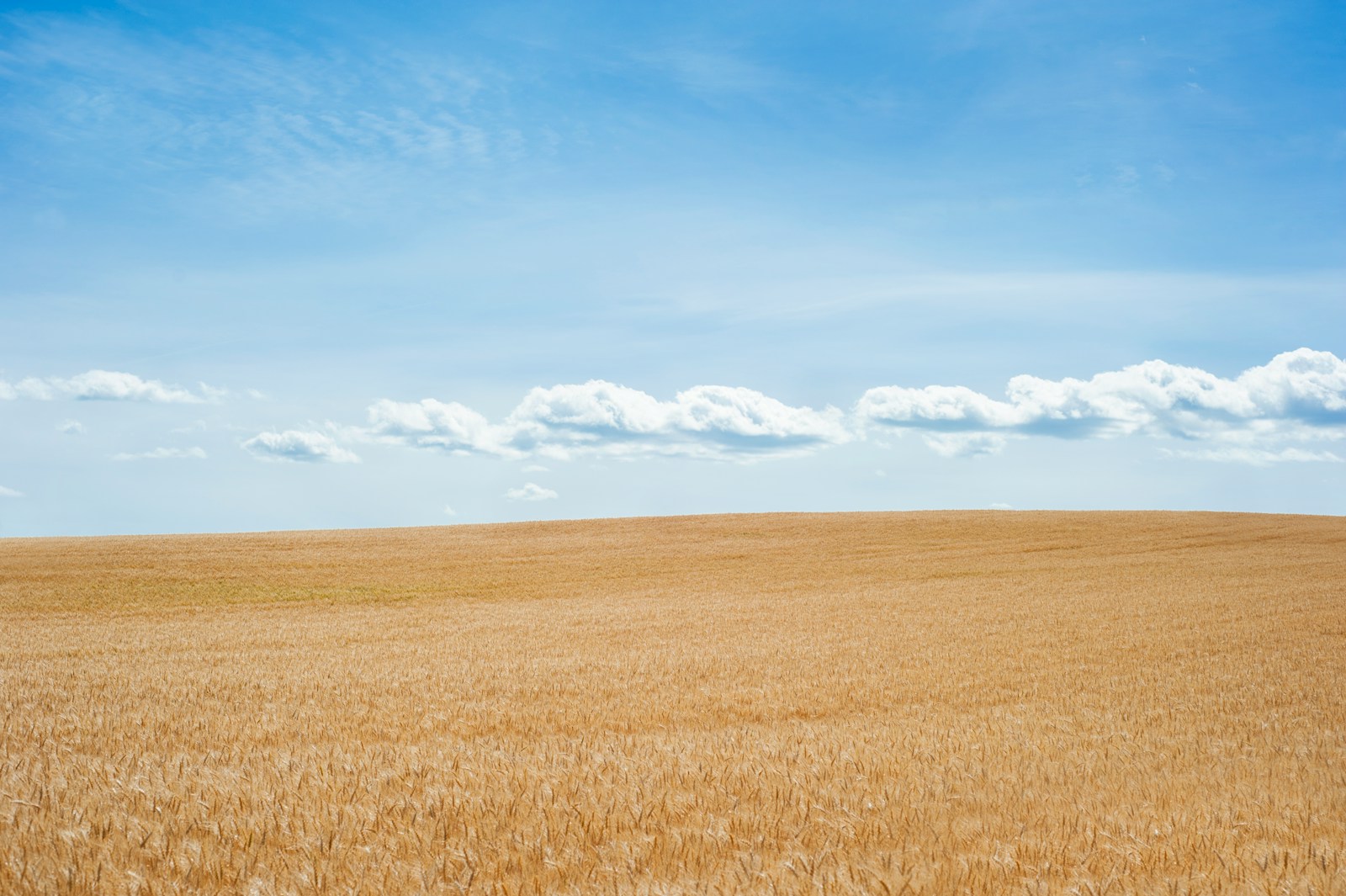Nature consistently amazes us with its breathtaking displays of power, beauty, and mystery. National parks around the world serve as protected sanctuaries where some of Earth’s most extraordinary natural phenomena can be witnessed in their full glory. From dancing lights in the sky to roaring geysers and mind-bending optical illusions, these natural wonders draw millions of visitors annually who seek to experience the raw beauty of our planet.
These phenomena remind us of nature’s complexity and perfection—events that have occurred for millennia but still leave us speechless with wonder. In this exploration of nature’s most dramatic performances, we’ll journey through national parks that showcase Earth’s most breathtaking spectacles.
Geothermal Wonders of Yellowstone National Park
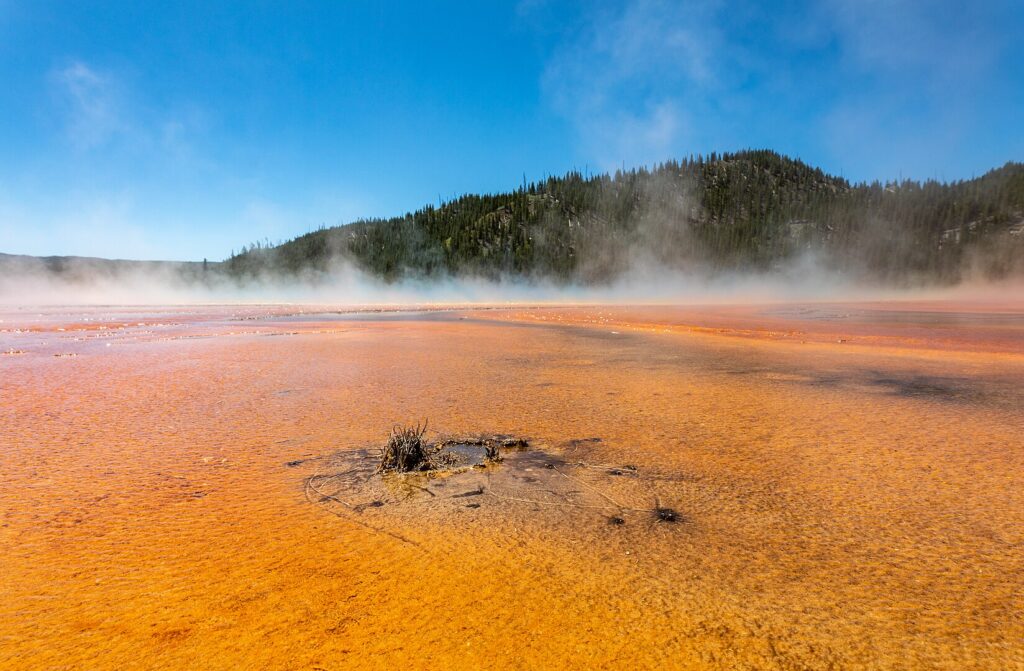
Yellowstone National Park hosts the world’s largest collection of geothermal features, with over 10,000 thermal areas including geysers, hot springs, mud pots, and fumaroles. The crown jewel of this volcanic wonderland is Old Faithful, a geyser that has been erupting approximately every 90 minutes for hundreds of years, shooting water up to 185 feet into the air. Beyond the predictable schedule of Old Faithful lies the magnificent Grand Prismatic Spring—the largest hot spring in the United States and third-largest in the world—whose rainbow rings of vibrant blue, green, yellow, orange, and red are created by heatloving bacteria that thrive in different temperature zones.
The park sits atop one of the world’s largest active volcanic systems, a massive caldera formed by three cataclysmic eruptions over the past 2.1 million years. Yellowstone’s thermal features offer visitors a rare glimpse into Earth’s internal workings, where molten rock heats groundwater that finds its way to the surface through complex systems of underground plumbing.
The Northern Lights in Denali National Park
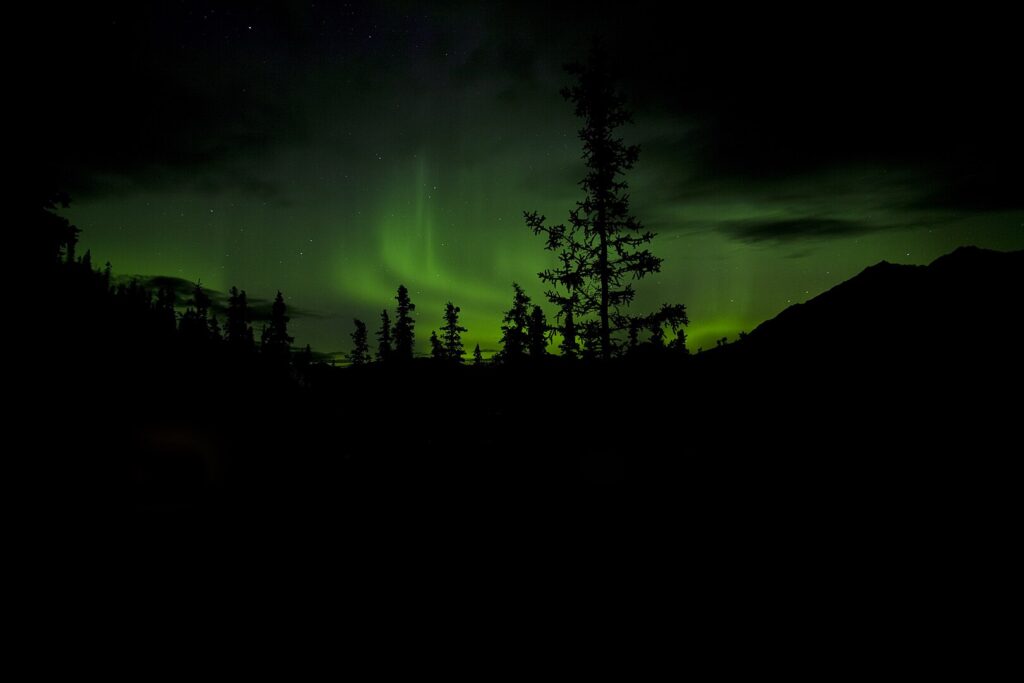
One of nature’s most mesmerizing light shows, the Aurora Borealis, frequently illuminates the night skies over Alaska’s Denali National Park during the winter months. These ethereal curtains of green, blue, pink, and purple light are caused by solar particles colliding with gases in Earth’s atmosphere, creating an otherworldly spectacle that has inspired myths and legends across northern cultures for centuries. Denali’s remote location and minimal light pollution make it one of the premier places in North America to witness this phenomenon, with the best viewing opportunities occurring between September and April when darkness prevails for longer periods.
The park’s vast wilderness, dominated by North America’s tallest peak (Denali, formerly Mount McKinley), provides a dramatic foreground against which these celestial light shows play out. Visitors who brave the sub-zero temperatures of an Alaskan winter are rewarded with the unforgettable sight of these luminous displays dancing across the star-studded arctic sky, often reflecting off snow-covered landscapes for an even more dramatic effect.
The Firefall at Yosemite National Park
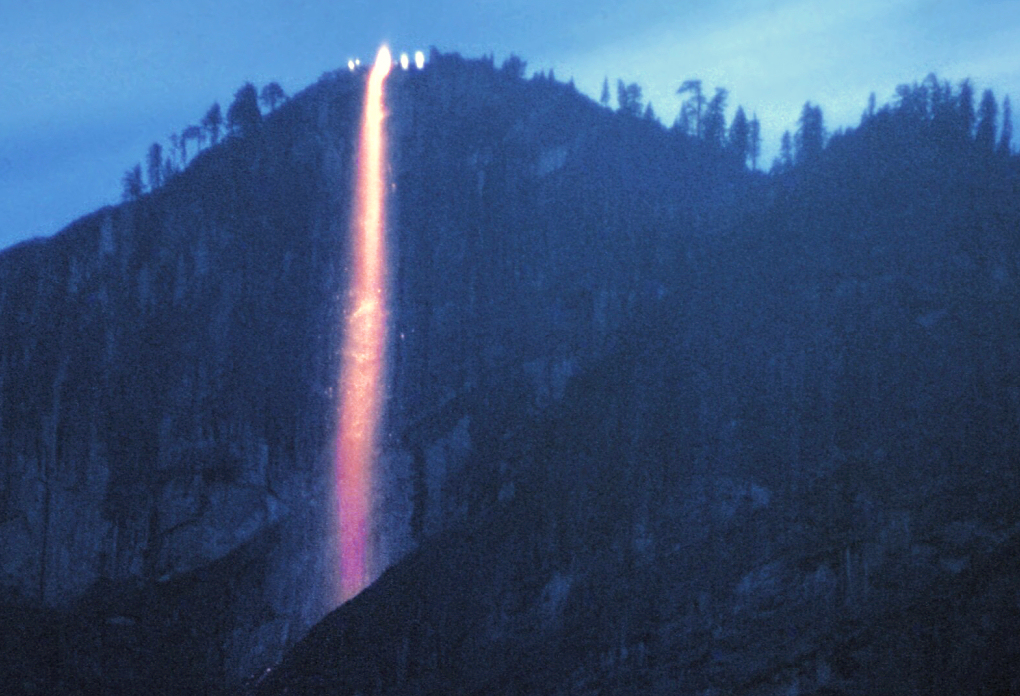
For a few magical weeks each February, visitors to Yosemite National Park may witness one of nature’s most spectacular optical illusions—the Horsetail Fall “firefall.” This rare phenomenon occurs when the setting sun strikes Horsetail Fall at just the right angle, illuminating the water with a fiery orange-red glow that makes the waterfall appear as if it’s a cascade of molten lava flowing down the eastern face of El Capitan.
Unlike most natural wonders that occur regardless of human observation, this phenomenon requires precise conditions: sufficient water flow in the seasonal Horsetail Fall, clear skies at sunset, and the perfect angle of sunlight that only happens during a brief window in mid to late February. The effect lasts for just a few minutes each evening during this period, creating a photographer’s dream and drawing thousands of spectators who position themselves at optimal viewing locations throughout the valley.
This natural light show is a testament to the ephemeral beauty of nature and the remarkable interplay between water, light, and the granite faces of Yosemite Valley.
The Midnight Sun in Gates of the Arctic National Park
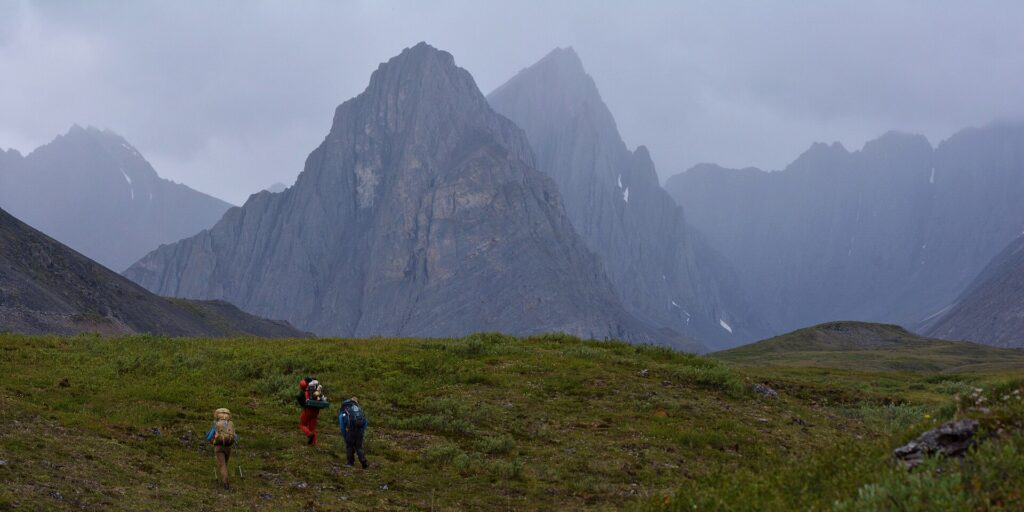
Located entirely north of the Arctic Circle in Alaska, Gates of the Arctic National Park offers visitors the surreal experience of the midnight sun—a phenomenon where the sun remains visible for 24 hours during summer months. From approximately late May through late July, the sun never fully sets below the horizon, instead skimming along it and creating an extended golden hour that bathes the landscape in warm, directional light throughout the night. This continuous daylight dramatically transforms the experience of wilderness exploration, allowing for round-the-clock hiking, photography, and wildlife observation in one of America’s most remote and pristine national parks.
The midnight sun phenomenon occurs due to the Earth’s tilted axis, which causes the North Pole to face toward the sun during summer months, resulting in continuous daylight above the Arctic Circle. For visitors accustomed to the regular rhythm of day and night, experiencing this perpetual daylight can be both disorienting and magical, offering a unique perspective on our planet’s relationship with its star and creating opportunities to witness nocturnal animals active during these unusually bright “nights.”
The Synchronized Fireflies of Great Smoky Mountains National Park
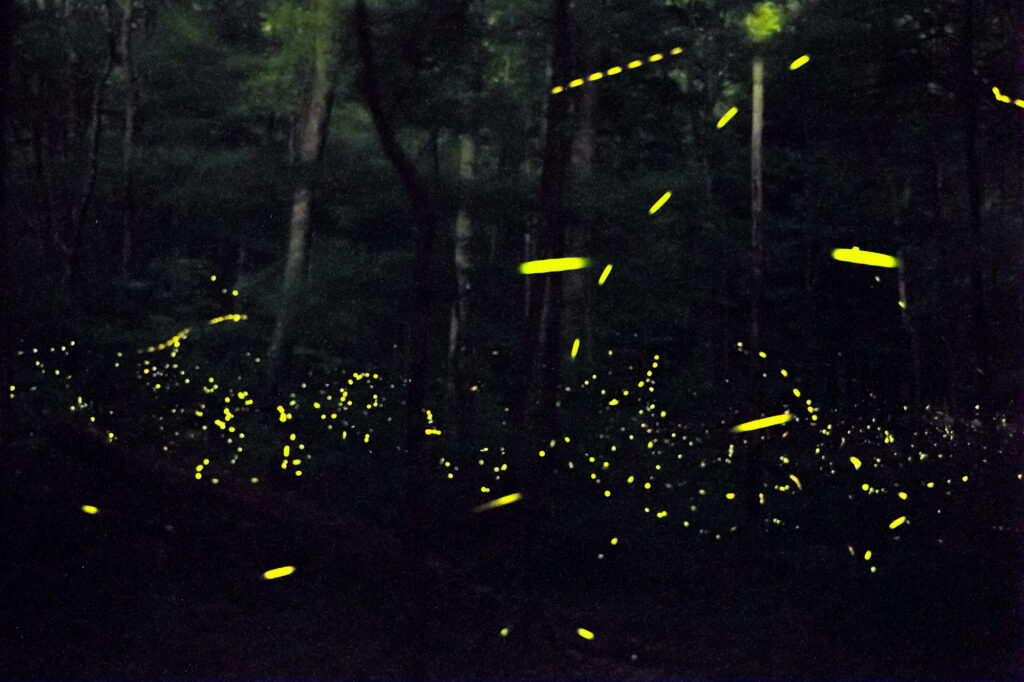
For roughly two weeks each year, typically in late May to mid-June, one of nature’s most magical light shows unfolds in the forests of Great Smoky Mountains National Park as thousands of fireflies flash in perfect synchrony. The Photinus carolinus, one of at least 19 firefly species found in the park, is one of only a few species in North America that can synchronize their light patterns, creating waves of light that ripple through the dark forest. Male fireflies flash their lights in unison as part of their mating ritual, creating a mesmerizing display that has become so popular that the park now uses a lottery system to manage the thousands of visitors hoping to witness this rare phenomenon.
This synchronized light show typically begins at dusk and continues for several hours into the night, with each firefly species having its own distinctive flash pattern and timing. Scientists believe the synchronization helps the males attract females more effectively, as females can better identify males of their own species when they all flash together, highlighting how even insects can coordinate complex behaviors across large populations without centralized control.
The Moving Rocks of Death Valley National Park
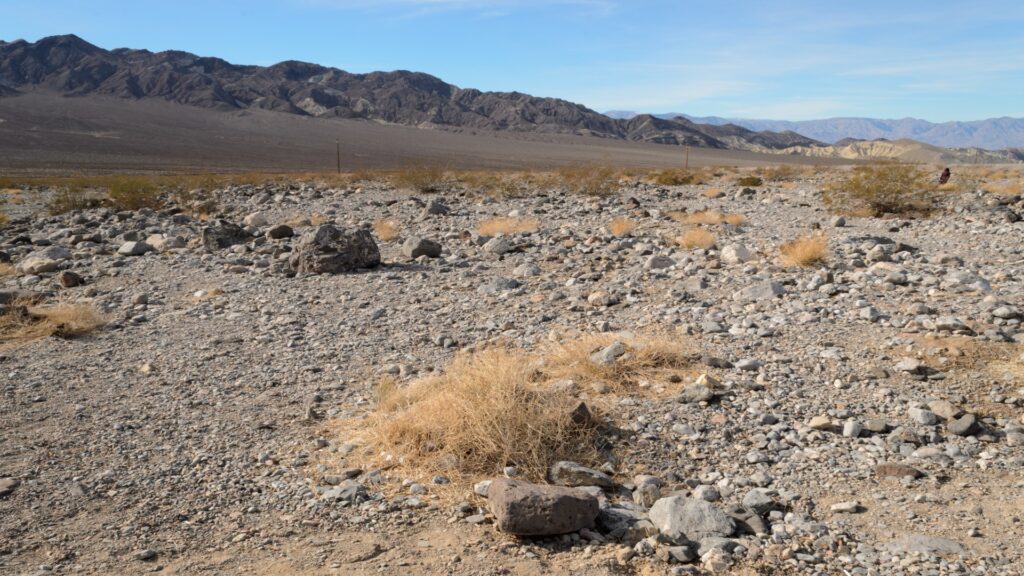
One of geology’s most enduring mysteries can be found on the cracked surface of Racetrack Playa in Death Valley National Park, where heavy rocks appear to move across the desert floor of their own accord, leaving long trails behind them. For decades, these “sailing stones” baffled scientists and visitors alike, as no one had ever witnessed the rocks in motion despite evidence of their movement in the form of long, meandering tracks etched into the dry lakebed.
The phenomenon was finally explained in 2014 when researchers discovered that in rare conditions where rain creates a shallow layer of water on the playa and nighttime temperatures drop below freezing, thin sheets of ice form around the rocks. When the sun rises and winds begin to blow, these ice panels can move, dragging the embedded rocks along the slippery mud surface at speeds of up to 15 feet per minute.
The resulting trails, which can stretch for hundreds of feet and change direction multiple times, create an otherworldly landscape that appears to defy the laws of physics. This remarkable phenomenon demonstrates how even in Earth’s most extreme environments, the combination of specific weather conditions can produce seemingly impossible natural occurrences.
The Bioluminescent Waters of Channel Islands National Park
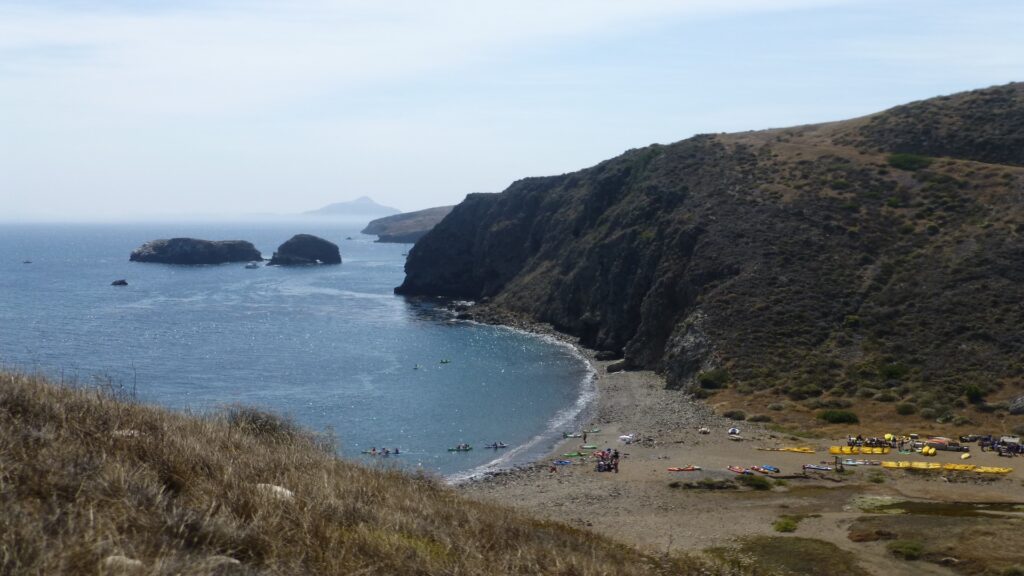
Visitors to Channel Islands National Park in California may witness one of the ocean’s most enchanting phenomena—waves that glow an ethereal blue as they crash against the shore. This natural light display is caused by bioluminescent dinoflagellates, microscopic marine organisms that emit light when agitated or disturbed, creating a magical effect similar to stars falling into the sea.
During “red tide” events, when these organisms bloom in massive numbers, nighttime kayaking or swimming around the islands can transform into an otherworldly experience as each paddle stroke or movement illuminates the surrounding water with blue-green light. The bioluminescence serves as a defense mechanism for these tiny creatures, as the sudden flash of light can startle potential predators or attract larger predators to eat whatever is disturbing them.
While the timing of these bioluminescent blooms is unpredictable, they most commonly occur during late summer and early fall when water temperatures are warmer. For photographers and night adventurers, capturing this phenomenon presents unique challenges but results in some of the most magical images of nature’s light-producing capabilities.
The Sandhill Crane Migration at Grand Teton National Park
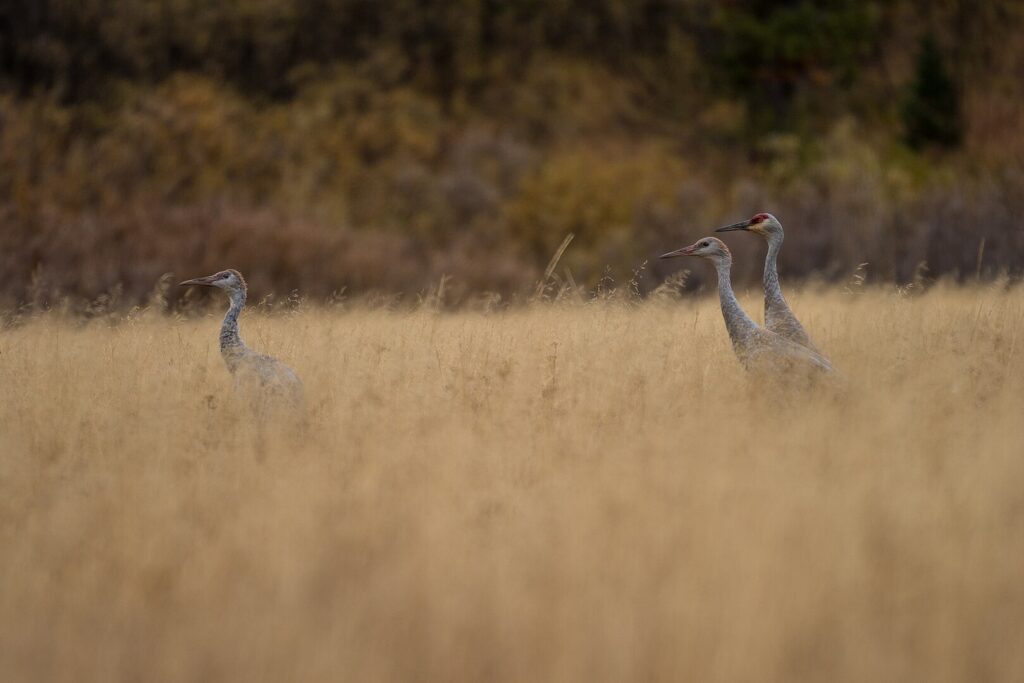
Each spring and fall, Grand Teton National Park becomes a crucial staging ground for one of North America’s most ancient and spectacular bird migrations—the journey of the sandhill cranes. These majestic birds, standing nearly four feet tall with wingspans exceeding six feet, gather in the thousands in the park’s wetlands and meadows before continuing their seasonal migration that can span thousands of miles from northern breeding grounds to southern wintering areas.
The sound of their distinctive trumpeting calls, which can be heard up to a mile away, creates a primeval chorus that has echoed across these landscapes for millions of years, as sandhill cranes are among the oldest known bird species still in existence, with fossil records dating back 10 million years. During peak migration periods, typically September to October and March to April, visitors may witness spectacular V-formations of cranes against the backdrop of the Teton Range or observe large congregations performing elaborate courtship dances involving leaps, bows, and wing displays.
This ancient migration represents one of nature’s most reliable rhythms, continuing largely unchanged since the last ice age and connecting modern visitors to a natural cycle that predates human civilization.
The Wave Formation in Vermilion Cliffs National Monument
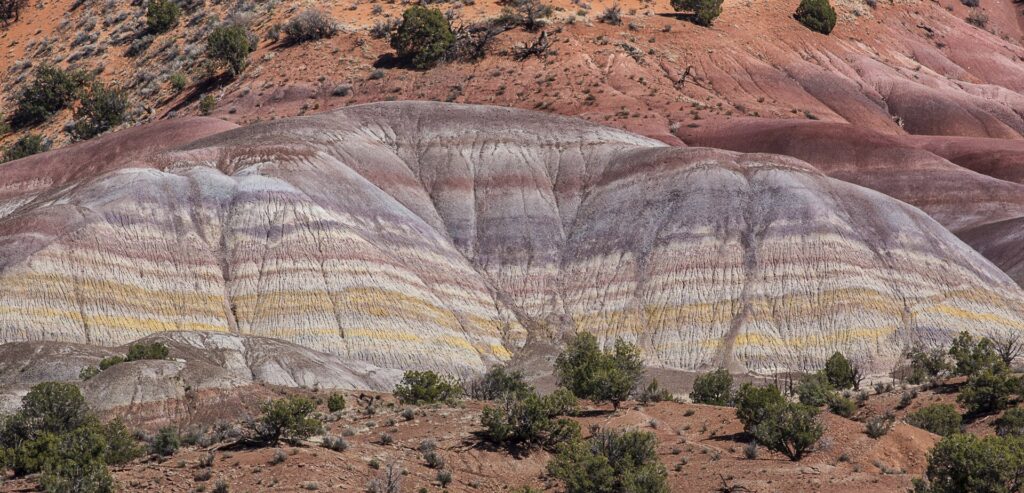
Tucked within the remote wilderness of Vermilion Cliffs National Monument in Arizona lies one of the most photographed and visually striking geological formations in the world—The Wave. This undulating sandstone marvel, with its swirling patterns of red, pink, yellow, and orange layers, resembles a frozen ocean wave captured in stone, creating an otherworldly landscape that seems more like a surrealist painting than a natural formation. Formed from Jurassic-age Navajo Sandstone deposited about 190 million years ago, The Wave’s distinctive appearance is the result of wind and water erosion that has carved these smooth, flowing channels over millions of years.
Access to this fragile environment is strictly limited to protect it from overuse, with only 64 permits issued daily through an intensely competitive lottery system that receives thousands of applications for each available spot. Those fortunate enough to obtain permits and make the challenging 6-mile round-trip hike without trails are rewarded with one of nature’s most photogenic masterpieces, where light and shadow play across the curved surfaces throughout the day, creating an ever-changing canvas of color and form that has inspired photographers and artists from around the world.
The Great Migration in Serengeti National Park

The Serengeti National Park in Tanzania hosts what is widely considered the greatest wildlife spectacle on Earth—the annual migration of over 1.5 million wildebeest, 200,000 zebras, and hundreds of thousands of gazelles as they follow the rains in search of fresh grazing grounds. This circular migration pattern, spanning approximately 1,800 miles between the Serengeti and Kenya’s Maasai Mara, represents the largest terrestrial mammal migration on the planet and has continued largely uninterrupted for thousands of years. The most dramatic moments of this migration occur at river crossings, particularly at the crocodile-infested Mara River, where thousands of animals gather nervously at the banks before suddenly plunging into the water en masse, creating chaotic scenes of determination, panic, and predation as crocodiles seize their opportunity for a feast.
The timing of the migration follows the annual rain patterns, generally moving northward from April to June and southward from November to January, though climate change has begun to affect these traditional patterns. This spectacular natural phenomenon represents one of the last great animal movements on Earth, offering visitors a glimpse into primeval Africa and the complex ecological relationships that have evolved over millennia between predators, prey, and the savanna environment.
The Ice Caves of Apostle Islands National Lakeshore
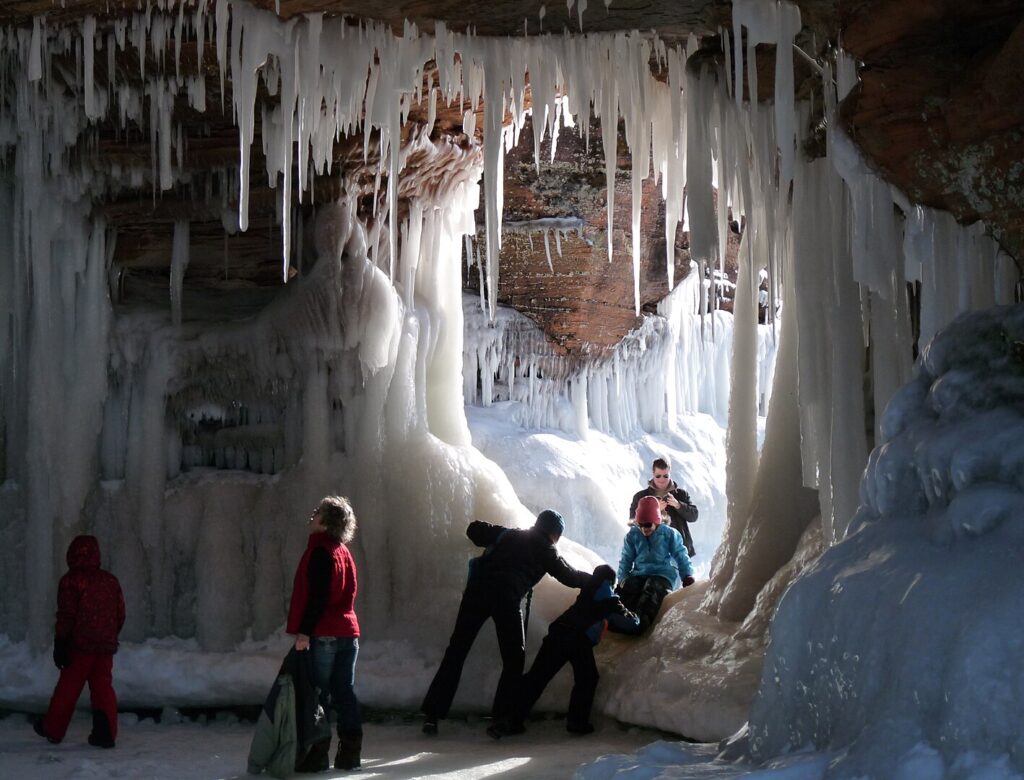
During particularly cold winters, Lake Superior’s shoreline at Apostle Islands National Lakeshore in Wisconsin transforms into a frozen wonderland of ice caves that attract thousands of visitors to their ethereal beauty. These temporary formations occur when lake water splashes against the sandstone cliffs and freezes in layers, creating curtains of icicles, frozen waterfalls, and cave-like chambers adorned with delicate ice formations in shades of blue, white, and amber.
The appearance of these ice caves is unpredictable and ephemeral, requiring specific weather conditions—sustained temperatures below 10°F for several weeks—to freeze the normally volatile Lake Superior sufficiently for safe access across the ice. When conditions permit (which happens only every few years), visitors can walk across the frozen lake to explore these crystalline galleries where sunlight filters through translucent ice to create an almost supernatural glow within the chambers.
Inside the caves, visitors discover an astonishing variety of ice formations: delicate hoarfrost crystals that sparkle like diamonds, smooth frozen draperies hanging from cave ceilings, and bizarre ice sculptures created as water drips and freezes in ever-changing patterns. This rare and fleeting phenomenon provides a magical intersection of geology, climate, and artistry that exists only briefly before warming temperatures return the lakeshore to its usual state.
The Monarch Butterfly Migration at Pfeiffer Beach State Park
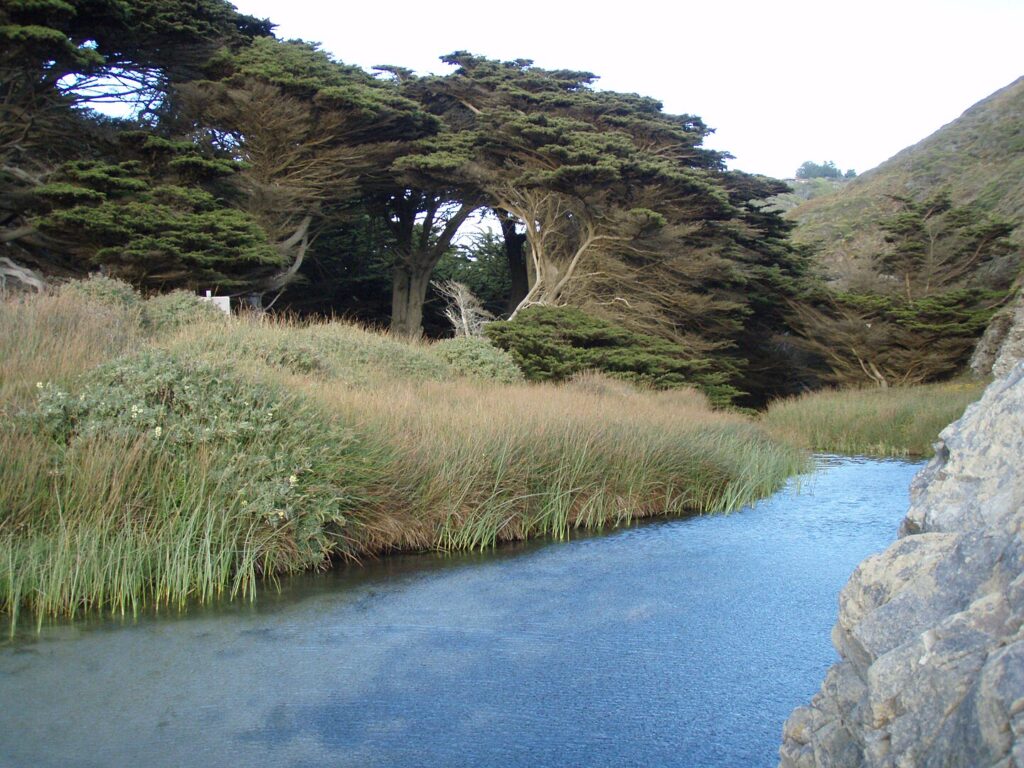
Each autumn, one of nature’s most delicate yet impressive migrations unfolds along the California coast, including parts of Pfeiffer Beach State Park, as millions of monarch butterflies journey from across the western United States to overwinter in specific groves of eucalyptus and pine trees. These fragile insects, weighing less than a gram each, travel up to 3,000 miles guided by an inherited GPS system that directs successive generations to the same overwintering sites year after year, despite no individual butterfly having made the complete journey before. During winter months, visitors to these butterfly sanctuaries can witness trees draped with thousands of monarchs clustered together for warmth, their orange wings folded to reveal the brown undersides that provide camouflage from predators.
On warmer days, the air fills with fluttering orange as butterflies leave their clusters to feed on nectar and engage in mating behaviors before beginning their multi-generational return journey north in spring. Tragically, this spectacular phenomenon faces an uncertain future, as monarch populations have declined by more than 80% in recent decades due to habitat loss, pesticide use, and climate change, making each year’s migration increasingly precious to witness and protect.
The Morning Glory Pool Color Changes in Yellowstone National Park
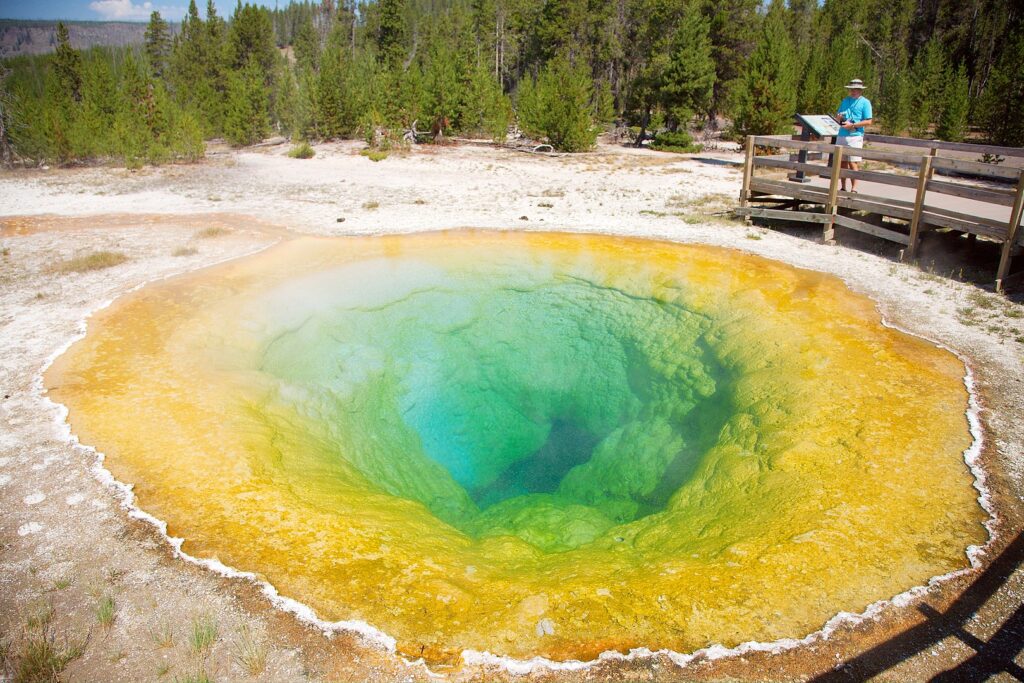
Among Yellowstone’s many geothermal wonders, Morning Glory Pool stands out for its tragic transformation from a vibrant blue hot spring to a multicolored pool that serves as a visible record of human impact on natural wonders. Named for its resemblance to the morning glory flower, this hot spring originally displayed a deep blue color resulting from the particular wavelengths of light that penetrate its clear, mineral-rich waters. Over decades, however, visitors threw coins, trash, and other objects into the pool, partially clogging the thermal vents and lowering the water temperature, which allowed different species of thermophilic (heat-loving) bacteria to colonize zones where they couldn’t previously survive. These different bacterial species create the concentric rings of color now visible in the pool: the cooler outer edges display orange and yellow hues, while the hotter center maintains some of its original blue coloration.
Park rangers have conducted several cleaning operations to remove debris, but the damage to the pool’s plumbing system appears permanent, making Morning Glory Pool an unintentional but powerful demonstration of how human activity can alter even the most seemingly resilient natural phenomena. Despite this human-caused transformation, the pool remains stunningly beautiful, with its sunset palette of colors providing a different but equally photogenic natural display that draws photographers and tourists year-round.
Conclusion
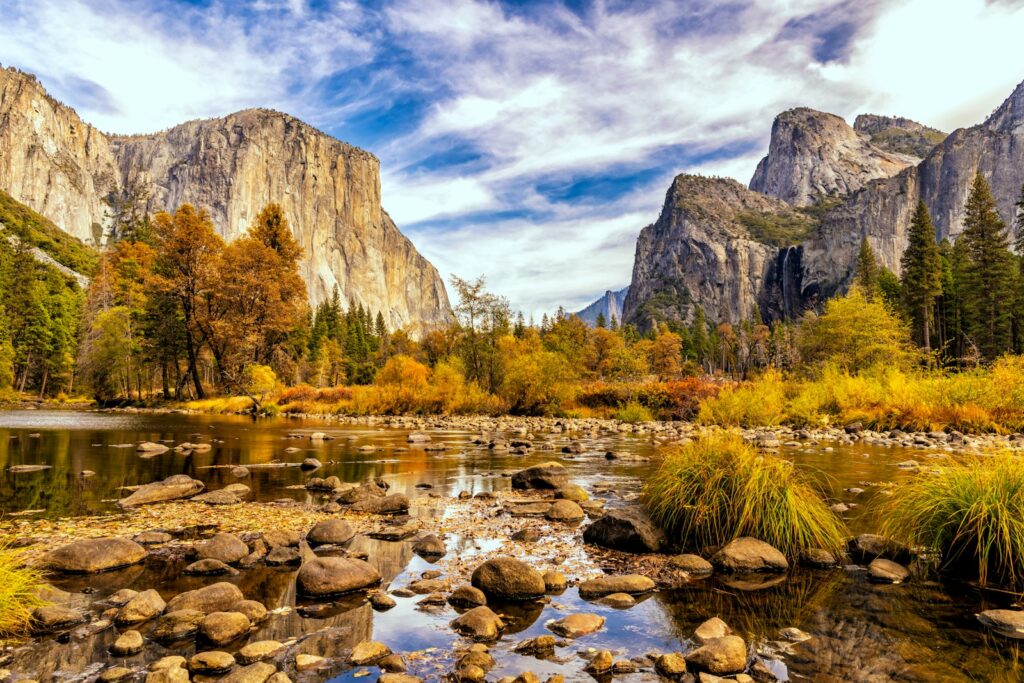
The natural phenomena showcased in our national parks represent Earth’s most spectacular displays—events that inspire wonder, foster scientific curiosity, and remind us of our planet’s dynamic nature. From predictable occurrences like Old Faithful’s eruptions to rare events like Yosemite’s firefall, these natural wonders connect us to geological and biological processes that have shaped our world for millennia.
As climate change and human activity increasingly impact these phenomena, witnessing them becomes both a privilege and a responsibility. National parks serve as crucial preserves where these natural performances can continue unhindered, allowing future generations to experience the same awe that has drawn humans to these spectacles throughout history. In protecting these phenomena, we saf

